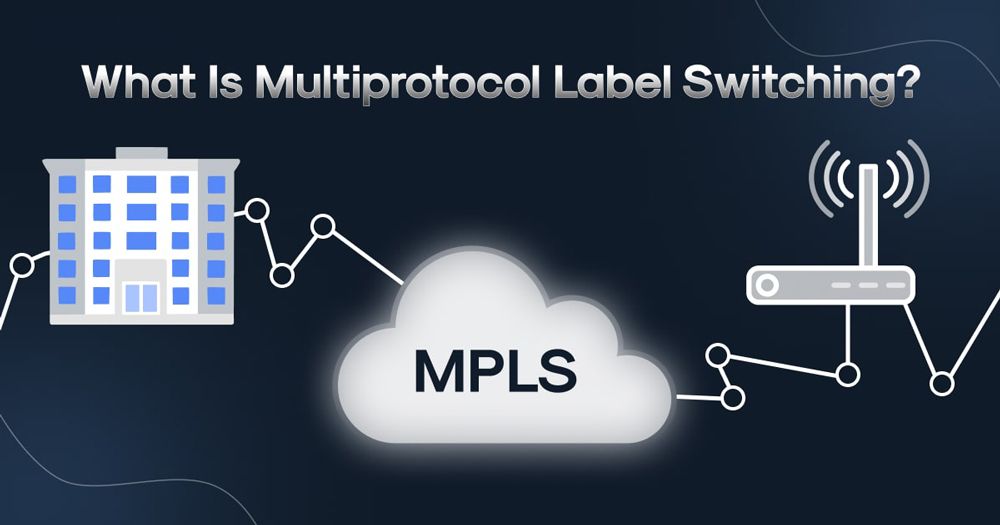In today’s digital era, businesses are increasingly dependent on network connectivity to operate efficiently. With the growing need to connect offices and branches across different locations, choosing the right network technology is crucial to ensuring performance and security. One of the most widely adopted solutions for businesses today is MPLS (Multi-Protocol Label Switching). But what exactly is MPLS, and why should businesses consider it for their network infrastructure?
In this article, we will explore the top 5 reasons why businesses should choose MPLS for their network systems.
What is MPLS?
MPLS (Multi-Protocol Label Switching) is a method used in high-performance telecommunications networks for routing and forwarding data. Unlike traditional IP routing, uses labels instead of IP addresses to make forwarding decisions, allowing it to more efficiently route data across the network. MPLS works with various network protocols, including IP, ATM, and Frame Relay, making it a flexible and scalable solution for modern enterprises.
MPLS improves network performance by streamlining the data forwarding process, reducing the time required for packet switching, and ensuring more predictable network performance. This makes it an ideal solution for businesses that rely on high-bandwidth applications or have multiple branch offices that need to be interconnected securely and efficiently.
Top 5 Reasons Why Businesses Should Choose MPLS
1. Enhanced Performance and Reduced Latency
One of the primary benefits of deploying Multi-Protocol Label Switching is its ability to enhance network performance and significantly reduce latency. This is particularly important for businesses using real-time applications such as VoIP (Voice over IP) or video conferencing, where delays or jitter can severely affect user experience.
Multi-Protocol Label Switching works by directing data traffic along predefined, optimal paths (called Label Switched Paths or LSPs), reducing the need for complex routing decisions at every hop. This streamlined routing process allows MPLS networks to deliver faster data transmission and reduced delays compared to traditional IP networks.
This is especially valuable for applications requiring high levels of responsiveness, ensuring that users experience minimal disruption and network downtime. Whether it’s voice calls, video meetings, or cloud-based applications, guarantees that your critical business services run smoothly and without interruption.

2. Improved Quality of Service (QoS)
Quality of Service (QoS) is a vital consideration for enterprise networks, particularly when different applications share the same bandwidth. MPLS allows for better traffic management by enabling businesses to prioritize and control traffic flows based on application type or user needs.
With Multi-Protocol Label Switching, businesses can create virtual tunnels or Label Switched Paths for specific types of traffic, ensuring that critical applications like VoIP, video conferencing, or ERP systems are given higher priority over less time-sensitive applications such as web browsing or file downloads. This ensures optimal use of available bandwidth and prevents congestion from affecting the performance of mission-critical services.
Moreover, MPLS networks can provide better bandwidth allocation and traffic engineering, ensuring that network resources are used effectively and without bottlenecks. By managing traffic more efficiently, MPLS helps businesses deliver consistent and reliable network performance.
3. Superior Security and Control
When using traditional network technologies, businesses often face security challenges, particularly when transferring sensitive data over public networks such as the Internet. MPLS offers enhanced security by establishing private, dedicated connections between network nodes, reducing the risk of data interception or eavesdropping.
The label-based forwarding mechanism in MPLS makes it difficult for unauthorized users to intercept or manipulate data. Additionally, allows businesses to implement encryption across their network paths, further protecting data during transit. This added layer of security is particularly valuable for businesses handling sensitive information, such as financial data or intellectual property.
Moreover, MPLS networks provide greater visibility and control over traffic flows. IT administrators can monitor network performance in real-time, detect security threats, and take immediate action to mitigate risks. This proactive approach to network security helps businesses safeguard their infrastructure from external attacks or internal vulnerabilities.

4. Flexibility and Scalability
MPLS offers a high degree of flexibility and scalability, making it an ideal choice for growing businesses. As organizations expand and add new offices or branch locations, MPLS networks can easily accommodate these changes without the need for significant infrastructure overhauls.
Unlike traditional networks, which may require complex reconfigurations when adding new connections, MPLS enables businesses to quickly integrate new sites into the network. This solution also simplifies the process of adjusting bandwidth allocation as the company’s needs evolve, providing the scalability necessary to support future growth.
For businesses looking to move into new geographic markets or increase their reliance on cloud-based services, MPLS offers a scalable and reliable solution. Whether adding remote offices, cloud applications, or new data centers, MPLS networks provide a seamless way to extend network resources and maintain performance levels.
Additionally, integrates well with emerging technologies like SD-WAN (Software-Defined Wide Area Network), which further enhances network flexibility by using software-based controls to optimize traffic and reduce dependency on physical infrastructure.
5. Cost Savings and Simplified Management
While the initial setup of an MPLS network can be more expensive than traditional networking solutions, it offers long-term cost savings. Helps businesses optimize bandwidth usage and reduce congestion, which can lower the costs associated with network upgrades and operational inefficiencies.
By consolidating voice, video, and data traffic over a single network infrastructure, businesses can reduce the need for multiple dedicated circuits, which can be costly to maintain. MPLS networks also reduce the operational costs associated with network management, as they provide a centralized platform for monitoring and troubleshooting.
Moreover, simplifies network management by allowing for more automated processes, such as traffic prioritization and fault detection. This reduces the need for manual intervention and makes the network easier to maintain, freeing up IT resources to focus on other strategic tasks.
Additionally, offers predictable pricing models, making it easier for businesses to budget for their network infrastructure. Whether opting for a managed this service or implementing an in-house solution, businesses can gain better control over their IT spending.
Conclusion
Choosing MPLS for your enterprise network is a strategic decision that can help improve performance, security, and overall efficiency. The ability to reduce latency, prioritize critical applications, and enhance security makes MPLS an attractive option for businesses that rely on reliable and fast connectivity.
Moreover, offers businesses the flexibility and scalability needed to grow and adapt to changing market conditions, all while reducing operational costs and simplifying network management. If your organization is looking for a high-performance network solution that can support real-time applications, ensure reliable connections, and scale with your business, is a smart choice.
Investing in this service today will enable your business to operate more efficiently, securely, and with greater confidence in your network infrastructure—helping you stay competitive in an increasingly connected world.
* Contact us:
- Email: dc@dcx.com.vn
- Phone: 0333361599
- Facebook: https://www.facebook.com/DCX.Tech.Solutions/
